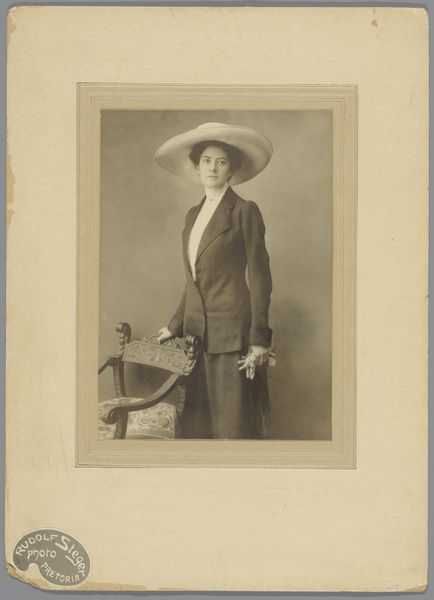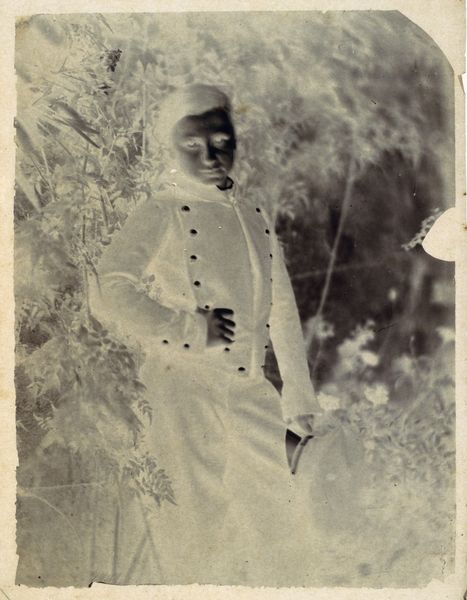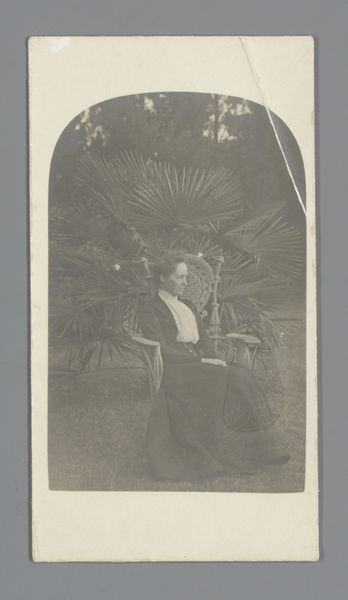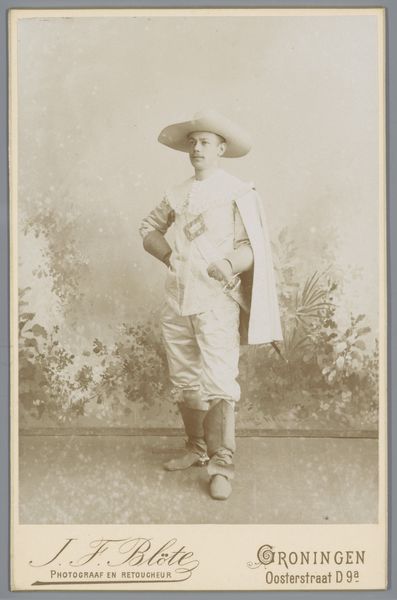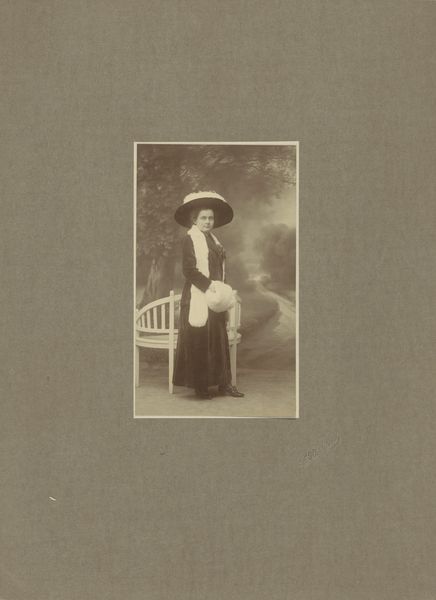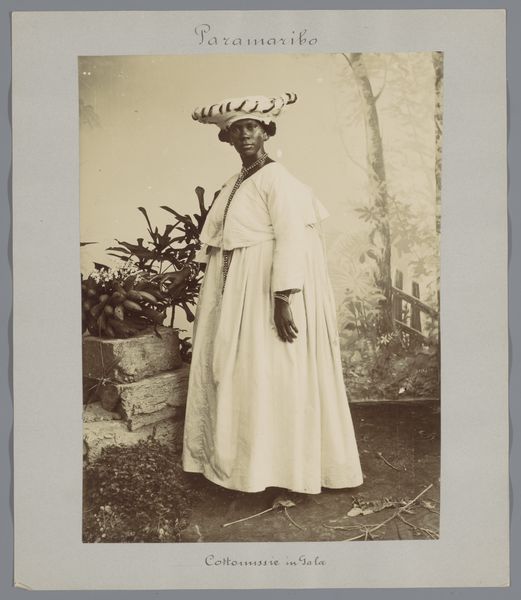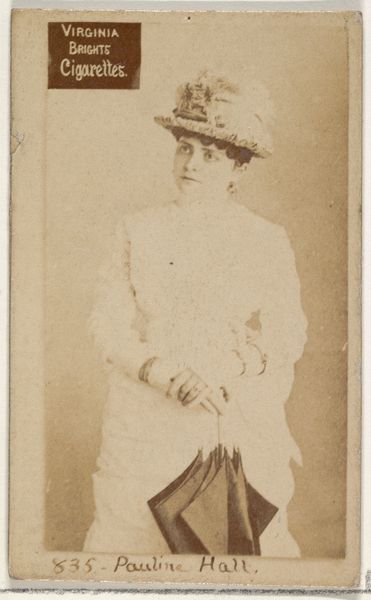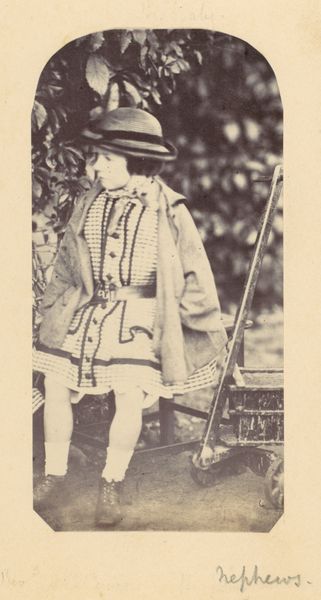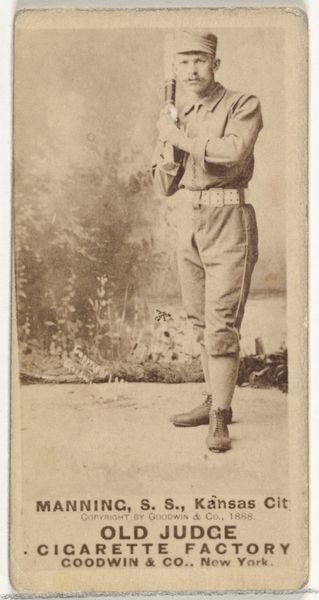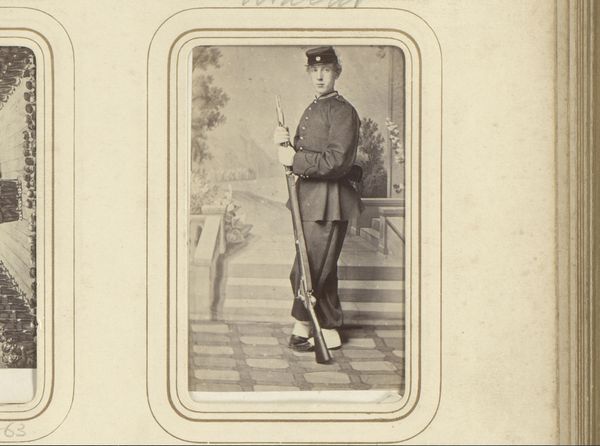
Portret van een man in tropenkostuum met hoed en wandelstok 1889 - 1898
0:00
0:00
photography
#
portrait
#
photography
#
historical photography
#
19th century
Dimensions: height 141 mm, width 96 mm
Copyright: Rijks Museum: Open Domain
This photograph, taken by Stafhell & Kleingrothe, captures a man in tropical attire, complete with hat and walking stick. Observe the pith helmet. Originally utilitarian, protecting colonials from the sun, it became a potent symbol of imperial authority. It echoes the helmets of Roman conquerors, adapted for a new world of dominion. The walking stick, too, transforms. From a practical aid, it evolves into a scepter-like prop, signifying power and control over the landscape and its people. We see this echo in portraits of European royalty, the scepter a clear signifier of authority. Consider the psychological weight of these symbols. They speak to a desire for order and control, reflecting deep-seated anxieties about the unknown. These anxieties, projected onto the colonized lands, manifest in the adoption of symbols that assert dominance. The image evokes a complex interplay of ambition, fear, and the human drive to impose meaning onto the world. These symbols never truly disappear; they resurface, transformed, carrying echoes of past meanings into new contexts.
Comments
No comments
Be the first to comment and join the conversation on the ultimate creative platform.
